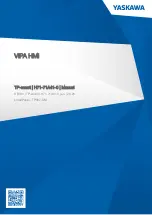
4 Cabling
4.1 General Cabling Instructions for Fieldbus
To keep the response time and the number of incorrect dispatches to minimum, use only standard industrial components in the
network and avoid complex structures. The requirements for commercial cabling components are specified in section 8-8 in the
ANSI/TIA/EIA-568-B series standards. Using commercial components can decrease system performance. The use of such products or
components can cause unsatisfactory performance in industrial control applications.
4.1.1 Cable Routing
It is important that fieldbus cables are routed separately from motor cables. The recommended minimum distance is 300 mm. Do
not let fieldbus cables and motor cables cross each other. If it is not possible, the fieldbus cables must cross other cables at an angle
of 90°.
Shielded fieldbus and control cables can be routed in parallel. To have further shielding, install a grounded metal conduit around
the fieldbus and control cable run.
A
B
e3
0b
h3
79
.1
0
≥
3
00
m
m
90°
Illustration 3: Routing the Motor and Fieldbus Cables
A
Motor cables
B
Fieldbus cables
Use cables with right length. If there is extra cable, put it in a noise free location. Multiple rounds of cable and a large circumstance
area make an antenna (see
). Noise connects to fieldbus cable and can cause communication problems.
AN338644703080en-0002 / DPD02156 | 33
Danfoss A/S © 2022.08
Cabling
VACON® RS485 and CAN Bus Option Boards
Installation Guide
Summary of Contents for VACON OPTC2
Page 2: ......
















































